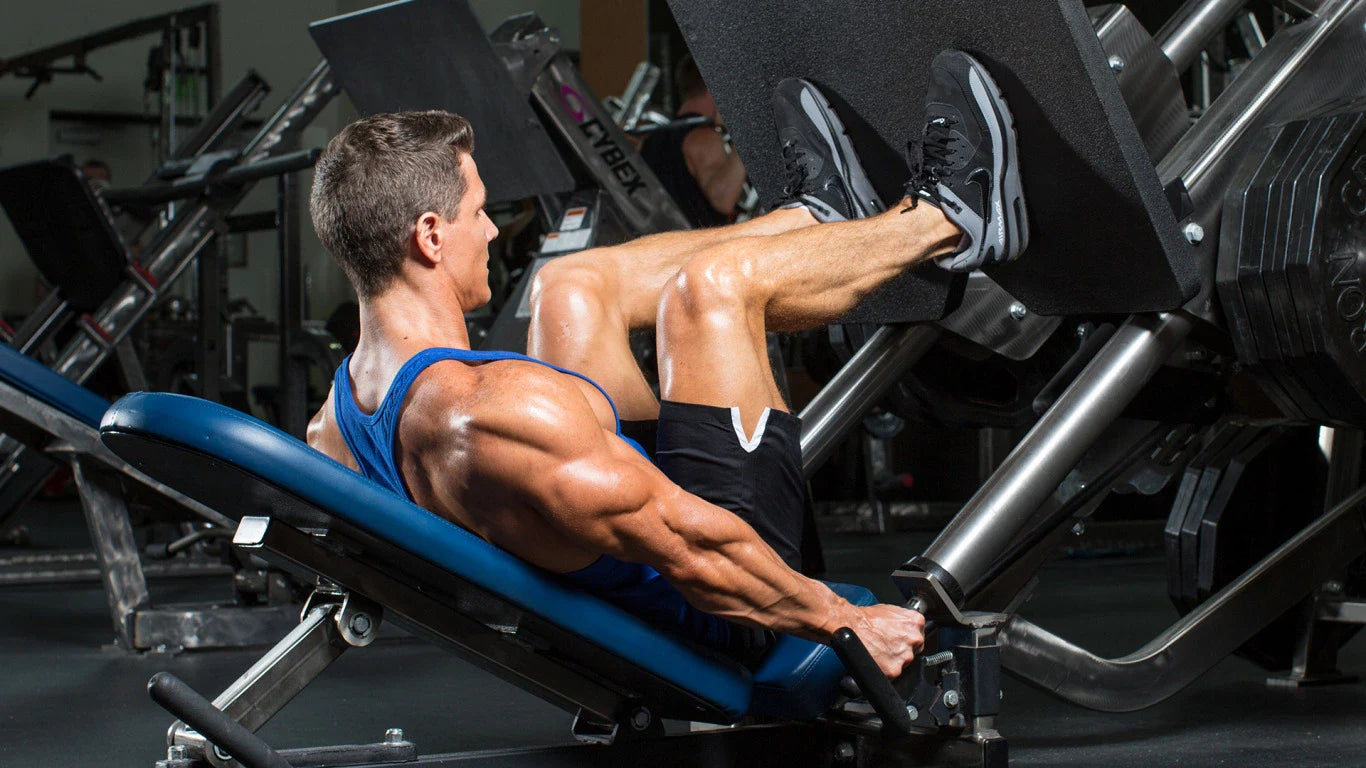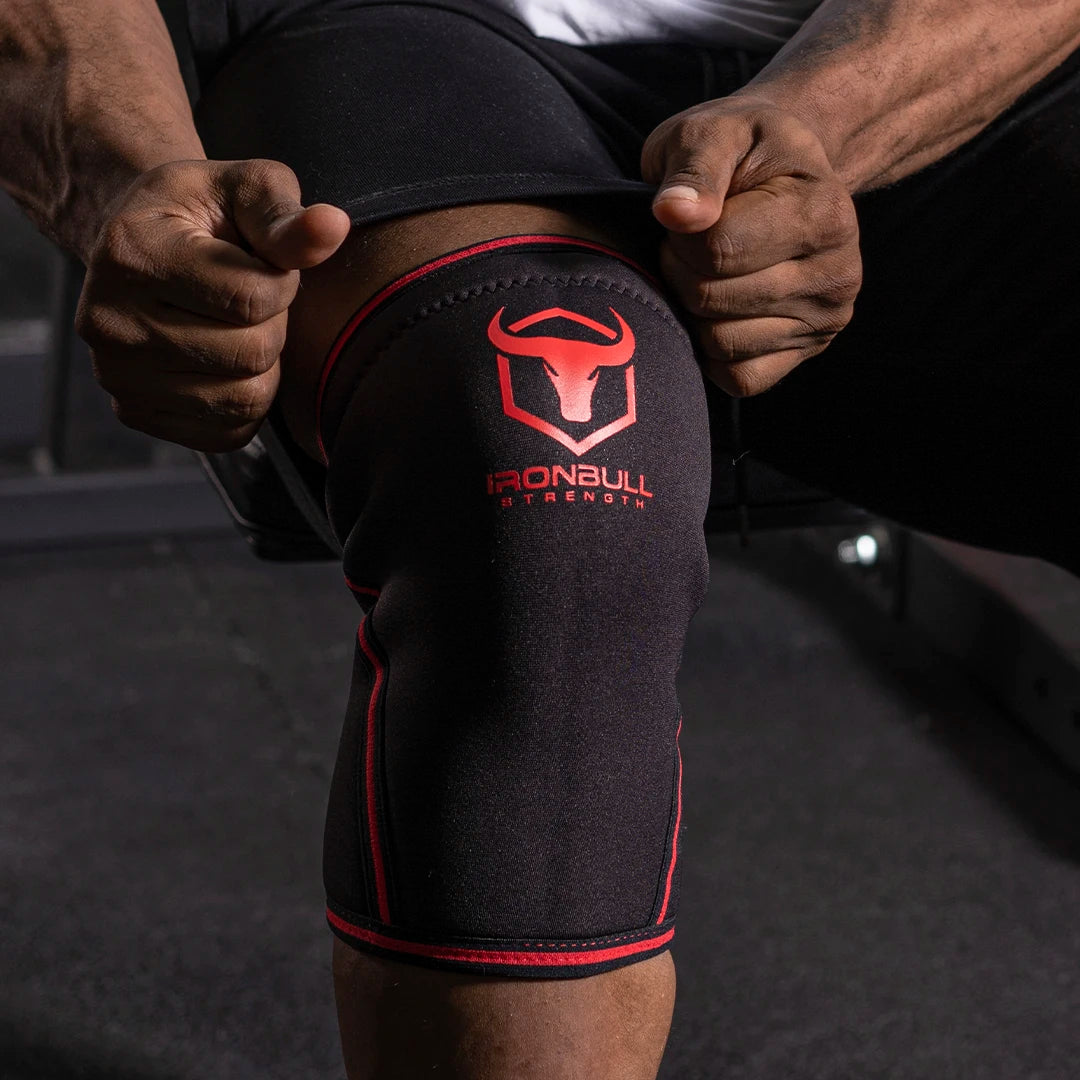Leg Press Knee Pain: Causes, Solutions, and Prevention Tips

Unless you've never been to the gym before, almost every gym goer has exercised on a leg press machine. But just because it's a machine that guides the movement doesn't mean there's no chance for an injury.
Leg press knee pain, referring to pain, discomfort, or injury in the knee area during or after performing leg press exercises, is a common issue. In this article, we will cover the importance of addressing and preventing it, provide a brief overview of the leg press exercise, and discuss its potential impact ranging from mild discomfort to severe pain on an individual's ability to exercise effectively.
Importance of addressing and preventing knee pain in leg press exercises
Managing and preventing knee pain in leg press exercises is crucial to maintain overall fitness goals and avoid long-term damage to the knee joint. By understanding the causes of knee pain and implementing appropriate prevention strategies, individuals can continue to engage in strength training without compromising their knee health.
The leg press exercise is a popular strength training exercise that targets multiple muscle groups, primarily the quadriceps, hamstrings, and glutes. It involves pushing a platform away from the body using the legs, mimicking a squatting motion. The leg press machine provides stability and support while allowing individuals to target specific leg muscles.
Causes of leg press knee pain
Improper foot placement on the leg press machine can increase stress on the knee joint and surrounding structures. Placing the feet too high or too low on the footplate can alter the biomechanics of the exercise, potentially leading to knee pain.
Maintaining proper form and technique during the leg press exercise can contribute to knee pain. It is essential to maintain a neutral spine, avoid excessive knee flexion or hyperextension, and ensure alignment of the knees with the toes during the movement.
Weakness or imbalances in the muscles surrounding the knee and hip joints, such as the quadriceps and hamstrings, can place additional stress on the knee joint during the leg press exercise. Strengthening these muscles and ensuring balanced development is crucial to prevent knee pain.
Engaging in leg press exercises with excessive frequency or lifting heavier weights than one's capabilities can lead to knee pain. Overtraining places excessive stress on the knee joint, leading to inflammation and discomfort.
Individuals with a history of knee injuries or existing knee problems are more susceptible to experiencing knee pain during leg press exercises. Previous damage to the knee joint can exacerbate with certain movements, leading to pain and discomfort.
Understanding the knee joint and associated muscles
The knee joint is a hinge joint that connects the thigh bone (femur) to the shin bone (tibia) and the kneecap (patella). It comprises several structures, including ligaments, tendons, cartilage, and muscles, all working together to provide stability and facilitate movements such as flexion and extension.
The leg press exercise primarily targets the quadriceps, hamstrings, and glutes. The quadriceps, located at the front of the thigh, extend the knee during the leg press movement. The hamstrings, located at the back of the thigh, assist in knee flexion and hip extension. Other leg muscles, such as the adductors and abductors, also play a role in stabilizing the knee joint during the exercise.
Maintaining a proper balance between the muscles surrounding the knee joint is vital for knee health and injury prevention. Imbalances between the quadriceps and hamstrings, for instance, can lead to increased stress on the knee joint, contributing to knee pain and injuries.
Common knee injuries and conditions related to leg press exercise
PFPS is a condition characterized by pain around or behind the kneecap. It is often caused by improper tracking of the kneecap during movements like leg press exercises. Weakness in the quadriceps, tightness in the surrounding muscles, or improper form can contribute to PFPS.
Patellar tendonitis, also known as jumper's knee, is an overuse injury that results in inflammation and pain in the patellar tendon. This condition can be exacerbated by excessive stress placed on the tendon during leg press exercises, especially if performed with incorrect form or excessive load.
Anterior knee pain refers to pain and discomfort in the front of the knee, often resulting from an imbalance in muscle strength or poor tracking of the kneecap. Improper technique or load distribution during leg press exercises can contribute to anterior knee pain.
Knee osteoarthritis is a degenerative joint disease that involves the breakdown of the cartilage in the knee joint. Engaging in excessive or improper leg press exercises can accelerate the progression of knee osteoarthritis and worsen symptoms.
In addition to the conditions mentioned above, leg press exercises can exacerbate other knee injuries, such as ligament strains or tears, meniscal injuries, and cartilage damage.
Prevention and treatment strategies
Ensuring correct foot placement on the leg press machine is crucial to maintain proper form and reduce stress on the knee joint. The feet should be positioned shoulder-width apart, with the toes pointed slightly outward. Placing the feet too high or too low can increase the risk of knee pain and injury.
Maintaining proper form and technique throughout the leg press exercise is crucial to minimize the risk of knee pain and injury. This includes maintaining a neutral spine, avoiding excessive knee flexion or hyperextension, and ensuring proper alignment of the knees with the toes.
To prevent knee pain during leg press exercises, it is essential to strengthen and condition the muscles surrounding the knee and hip joints. Exercises such as squats, lunges, and leg extensions can help improve overall lower body strength, stability, and balance, reducing the risk of knee pain.
Individuals experiencing knee pain during leg press exercises may benefit from using knee wraps or other supportive gear. These can provide additional stability and compression to the knee joint, reducing discomfort and promoting proper alignment.
If leg press exercises consistently cause knee pain, individuals may consider incorporating alternative leg exercises that can provide similar benefits without exacerbating knee issues. Squats or hack squats, for example, target the same muscle groups while providing a different range of motion.
Rest and recovery play a crucial role in preventing knee pain and promoting overall knee health. Individuals should incorporate rest days into their workout routine to allow the knee joint to heal and recover from the stress of exercise.
If knee pain persists or becomes severe, it is advisable to seek professional guidance from a physical therapist or sports medicine specialist. These experts can perform a thorough assessment, provide personalized treatment and rehabilitation plans, and offer guidance on proper form and technique.
Using Knee Sleeves
By applying compression, knee sleeves aid in reducing swelling and inflammation, which can be beneficial in cases of anterior knee pain or patellofemoral pain syndrome. They also help to promote proper knee alignment and tracking during leg press exercises, which is crucial for preventing knee injuries.
Knee sleeves offer valuable support to the quadriceps muscle group, a primary player in leg press exercises. This support aids in diminishing muscle strain and fatigue, enabling individuals to undertake the exercise with improved control and form. Furthermore, knee sleeves facilitate knee flexion and extension, crucial movements in leg press exercises. By applying gentle pressure on the knee cap and patellar tendon, they play a role in stabilizing the knee and mitigating the potential for injuries.
Importance of overall leg and lower body strength training
Engaging in regular exercise and strength training, including leg press exercises, offers numerous benefits for knee health. Strengthening the muscles surrounding the knee joint can provide stability, improve joint alignment, and reduce stress on the knee joint, thereby reducing the risk of knee pain and injury.
Incorporating a variety of leg and lower body exercises, such as squats, lunges, and hamstring curls, can help maintain muscle balance, prevent overuse injuries, and promote overall lower body strength. Balancing leg press exercises with other exercises ensures that no single muscle group is overly stressed, reducing the risk of knee pain.
Incorporating rest days and proper recovery into the workout routine
Rest days and adequate recovery are essential to any workout routine, especially when preventing knee pain. Allowing the body, including the knee joint, sufficient time to recover and repair is crucial for long-term knee health.
Conclusion
In conclusion, leg press knee pain is a common concern for individuals engaging in leg press exercises. By understanding the causes of knee pain, the anatomy of the knee joint, and the role of surrounding muscles, individuals can take proactive measures to prevent knee pain and injury.
Incorporating proper form and technique, strengthening and conditioning exercises, rest and recovery, and seeking professional guidance are crucial to maintaining knee health for long-term fitness goals. Remember, prioritizing knee health allows for continued progress in strength training and overall lower body development while minimizing the risk of setbacks or chronic pain.


